

Gautam Sharma
2 Months Ago
The top-spec Everest is as good as gold... Platinum even. It blurs the lines between off-road 4WDs and SUVs with its class, though it's pricey.
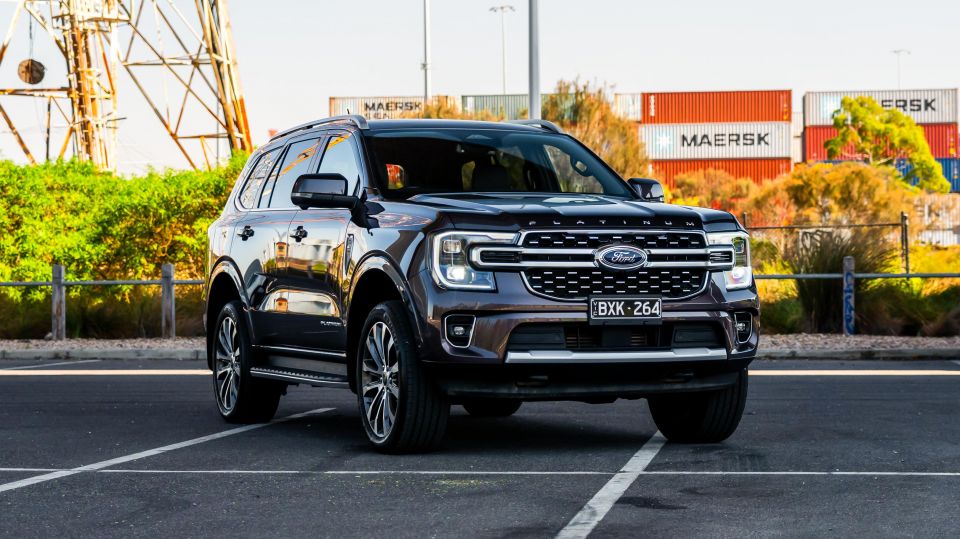
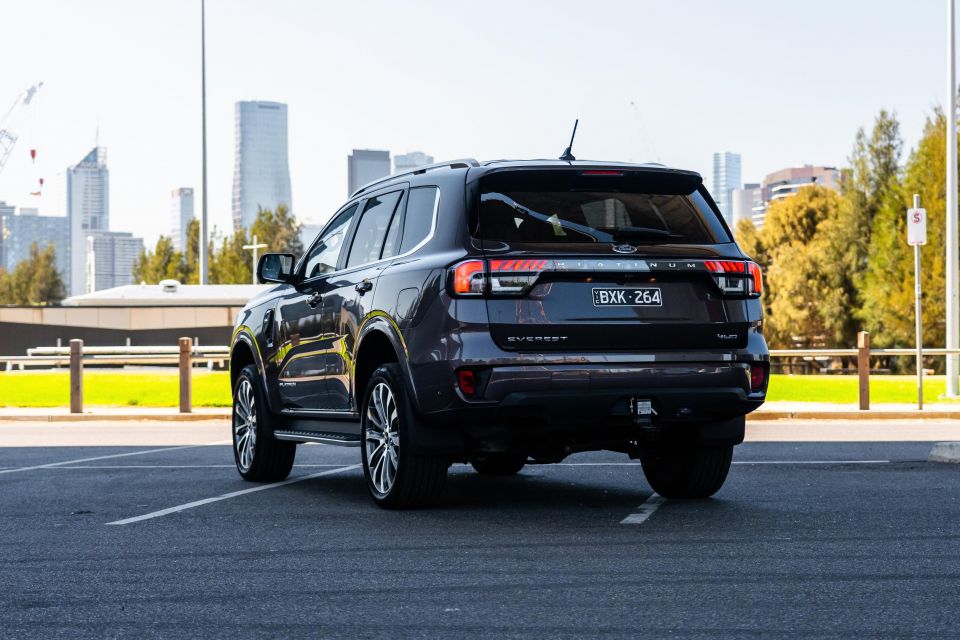

Quickly see how this car stacks up against its competition. Select any benchmark to see more details.
CarExpert helps new car buyers save thousands with expert reviews, honest advice, and transparent pricing – no dealer pressure and no sales games.
The Ford Everest is really starting to hit its stride in Australia.

After a slow-ish start due to short supply of high-demand variants, Ford’s 4WD SUV twin to the top-selling Ranger ute is now top of its class for sales, and regularly breaking sales records for the nameplate.
It’s almost now experiencing the sort of popularity the Territory once enjoyed. With good reason too, it’s a benchmark amongst its peers for performance, refinement and capability. Plus, it blurs the lines between ladder frame and monocoque SUVs in terms of driving manners.
Here we have the Ford Everest Platinum V6 4WD, the flagship of the range with all the bells and whistles. At launch it was considered expensive, but now that cheaper rivals are getting closer in price, and the next-gen Toyota LandCruiser Prado will top out at $100,000, the top-spec Ford may not be such a bad idea after all.
Technically the car we have on test is an MY23 example, but bar some minor price and feature adjustments it’s largely representative of a new vehicle if you order one now – sadly, the older build was all we had access to.
While expensive, the flagship Everest is fitted with everything the nameplate has to offer; and packs enough performance, luxuries, tech and capability to rival a top-spec LandCruiser Prado or even a VW Touareg.
Is this top-spec Everest still a top pick for those wanting a luxurious family adventure vehicle with all the fruit? Or is the asking price too steep? Read on to find out.
The Everest Platinum is only available with a V6 diesel and 4×4, and prices are up by $1625 for MY24.5.
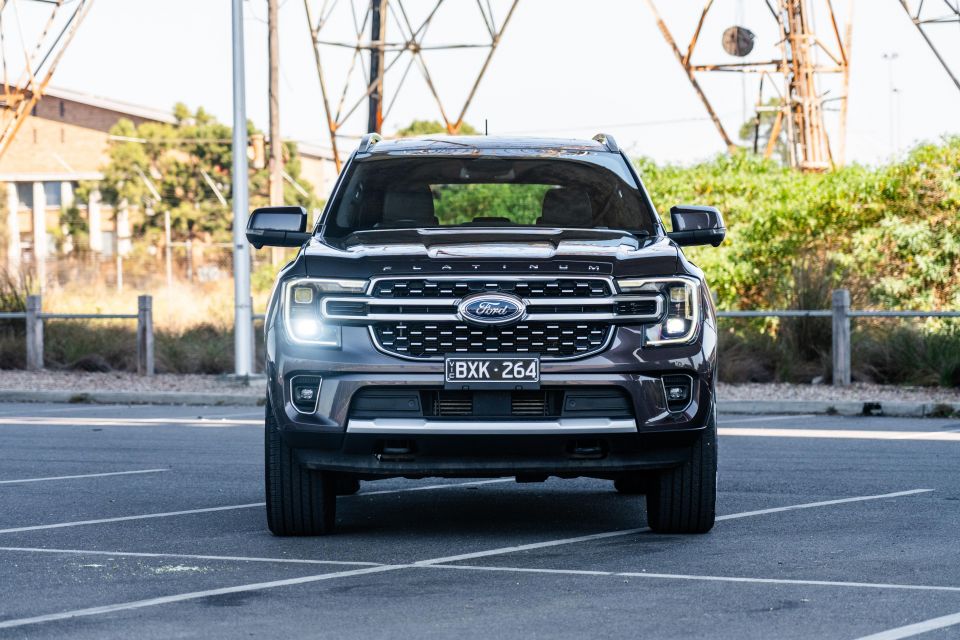
| Model Variant | $RRP |
|---|---|
| 2024 Ford Everest Ambiente RWD | $54,240 (+$250) |
| 2024 Ford Everest Ambiente 4WD | $59,240 (+$250) |
| 2024 Ford Everest Sport RWD | $63,740 (+$250) |
| 2024 Ford Everest Trend 4WD | $67,040 (+$250) |
| 2024 Ford Everest Sport 4WD | $73,740 (+$1250) |
| 2024 Ford Everest Platinum 4WD | $81,115 (+$1625) |
To see how the Everest compares with its rivals, check out our comparison tool.
It’s certainly a little dressier in here than lower-grade variants.

While the overall design and layout are the same Ford Everest (and Ranger) we’ve come to know and (largely) love, the Platinum gets some nicer detailing which really helps to elevate the ambience above the Trend and Sport.
The smooth, quilted leather-accented chairs are an obvious differentiator, and definitely look and feel very nice. They’re also heated and ventilated with power adjustment. Very nice.
It’s a shame the upholstery can’t be ordered in another colour, with black the option locally. The brown wood-look inlays are subtle and a classy touch in this reviewer’s eyes.
Additional padded and stitched surfaces line the dashboard and the door tops, and the Platinum is the only Everest variant to feature the high-end 12.3-inch digital instrument cluster – which is much better than the base unit.


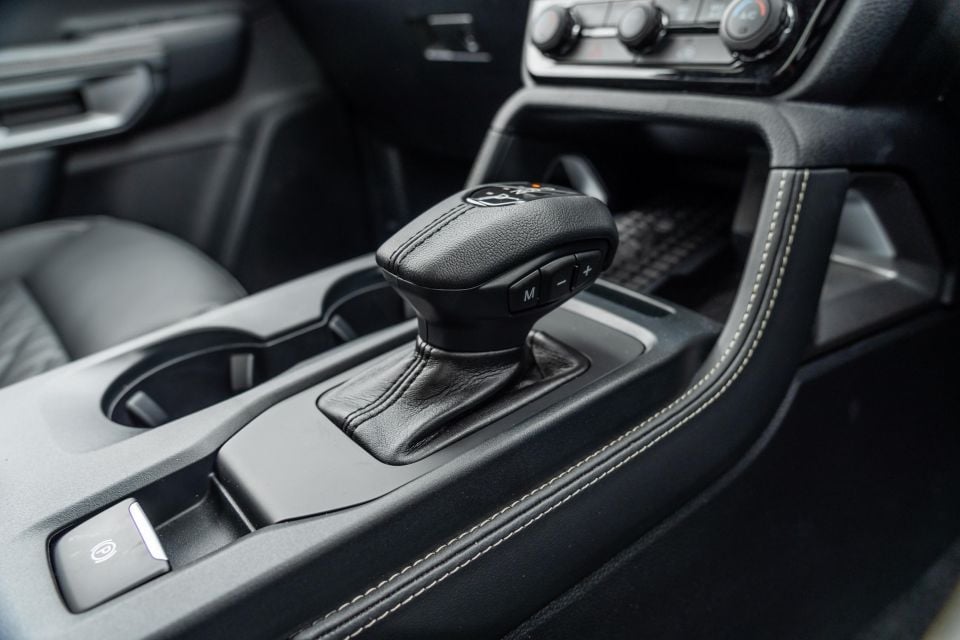
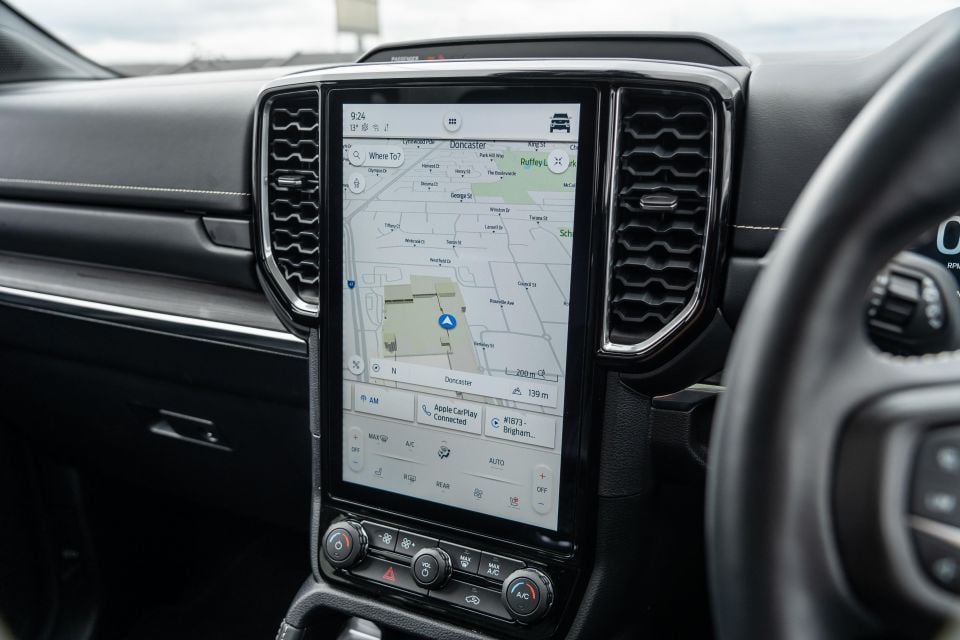
The contrast stitch details even extend to the sides of the centre console as well as the front centre armrest, and there’s a lovely cross-stitch effect for the steering wheel rim, too. Classy.
As noted earlier the larger digital instrument panel kills the piddly unit in lower grades, with lovely graphics, clarity and animations. It’s not quite as configurable as we’d like though, playing second or third fiddle to the units employed by the Volkswagen Group in terms of configurability and features.
The portrait-oriented 12-inch central touchscreen running Ford’s SYNC 4 interface remains a highlight especially compared to the units offered by rival off-roaders. It’s slick, fully featured and pretty easy to use.
In addition to wireless Apple CarPlay and Android Auto, there’s DAB radio and embedded satellite navigation with live traffic updates. The on-board modem also facilitates FordPass Connect, which in addition to the net-based traffic data adds remote functionality via the FordPass app – it remains a benchmark here.
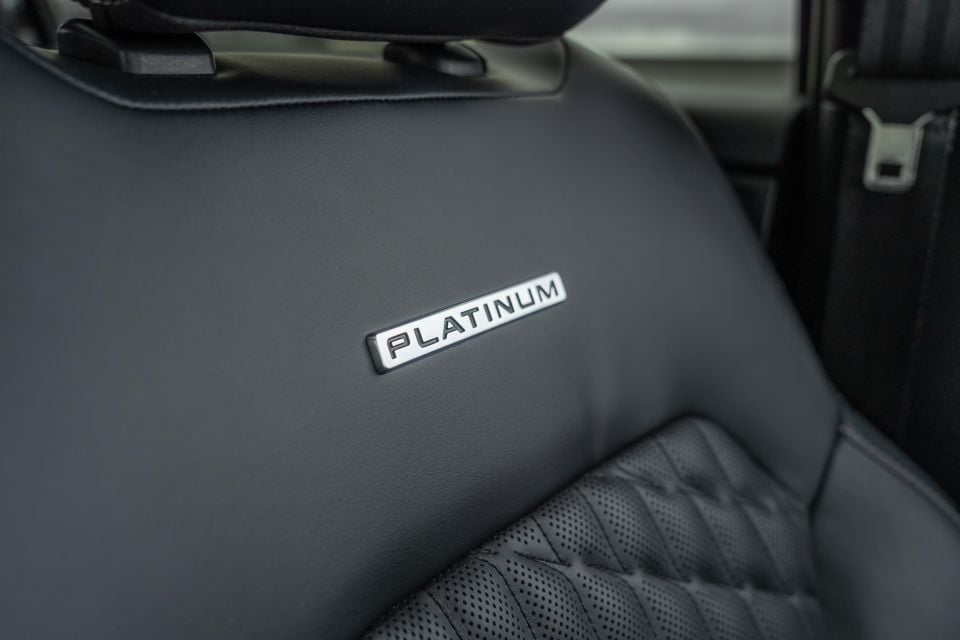
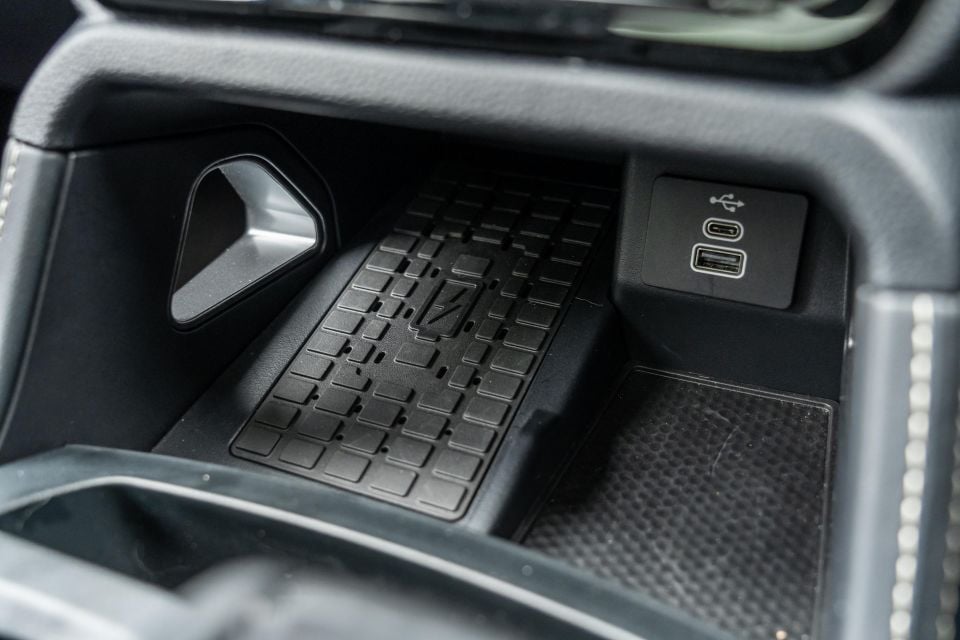

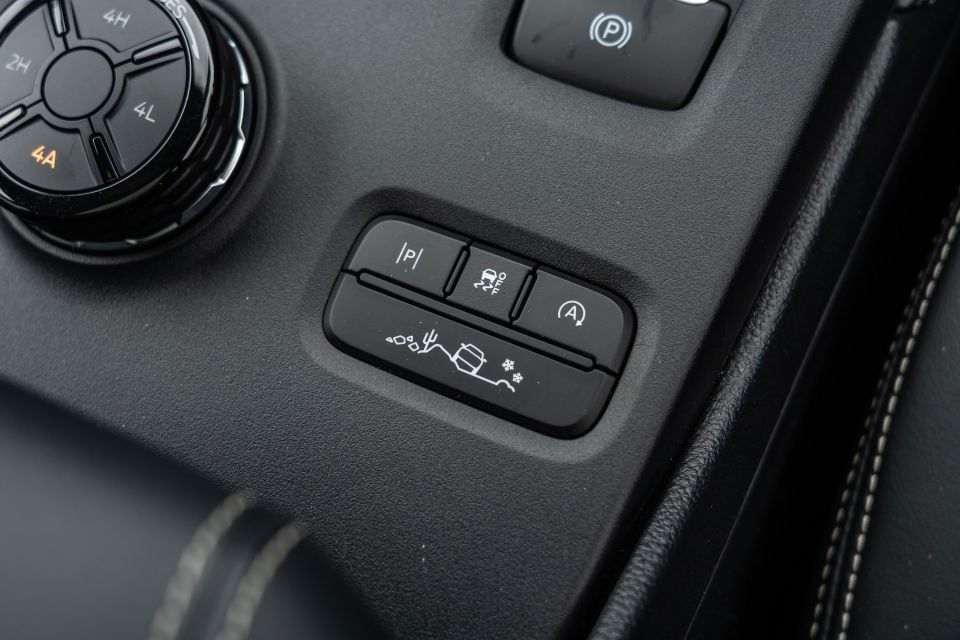
While some will lament the move to digitised climate controls via the touchscreen, Ford has cleverly retained physical knobs and buttons for these functions so owners are offered the choice.
Build quality in our pretty old (by press car standards) test vehicle seemed to hold up pretty well, with no loose fitting bits of trim or any noticeable squeaks or rattles.
Some of the joins around the sides and bridge elements near the touchscreen aren’t quite as consistent as we’d like for a vehicle costing the Platinum’s coin, however, and the harder, scratchier materials dotted throughout areas of the cabin are definitely leaning into the Everest’s utilitarian utes – an Audi Q7 it is not, nor does it really have to be.
Storage options include a deep shelf under the touchscreen with wireless phone charging pad, an assortment of cubbies including a double glovebox and underarm bin, as well as relatively deep door bins.
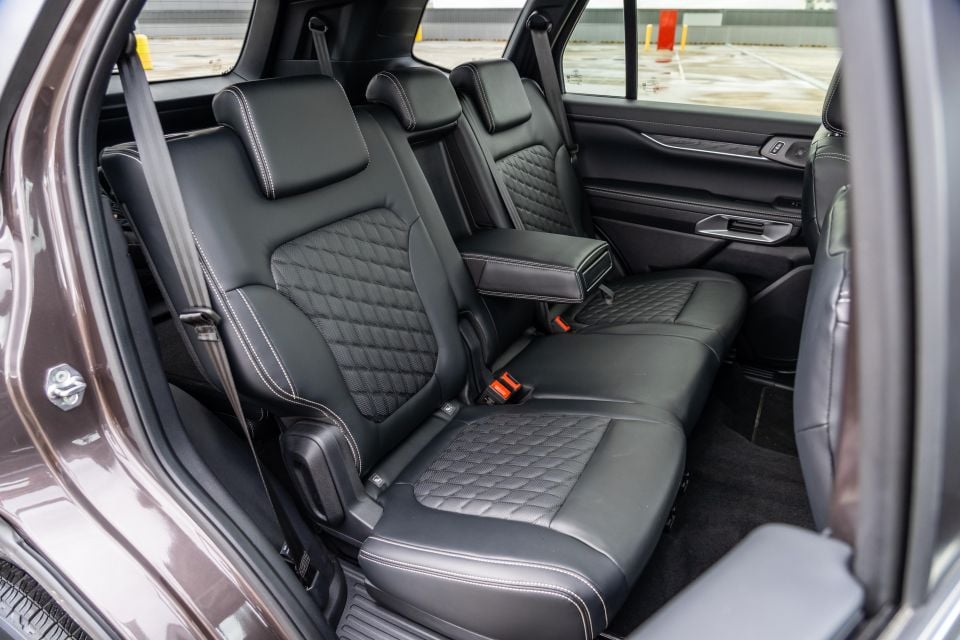
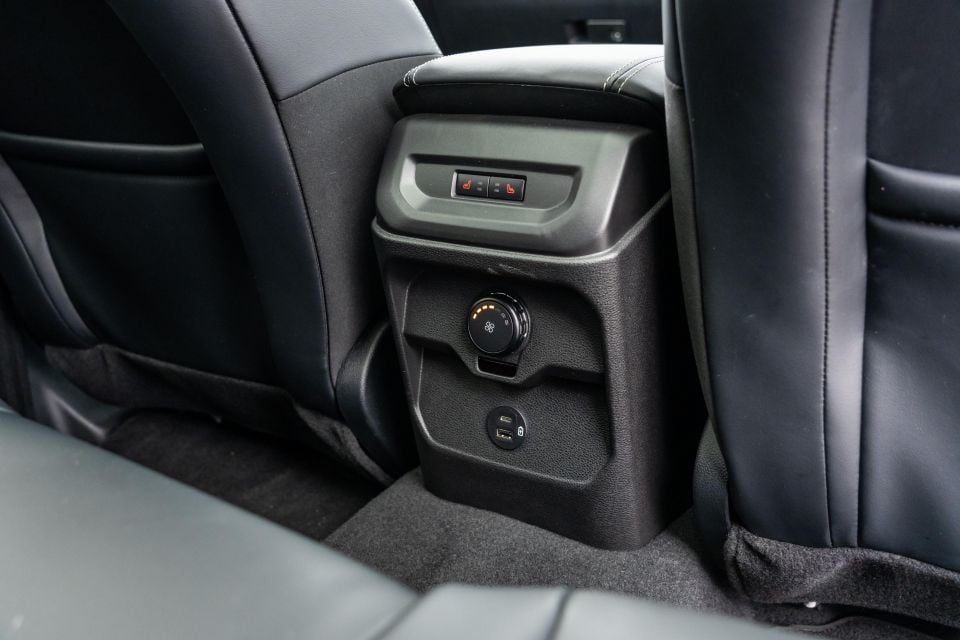
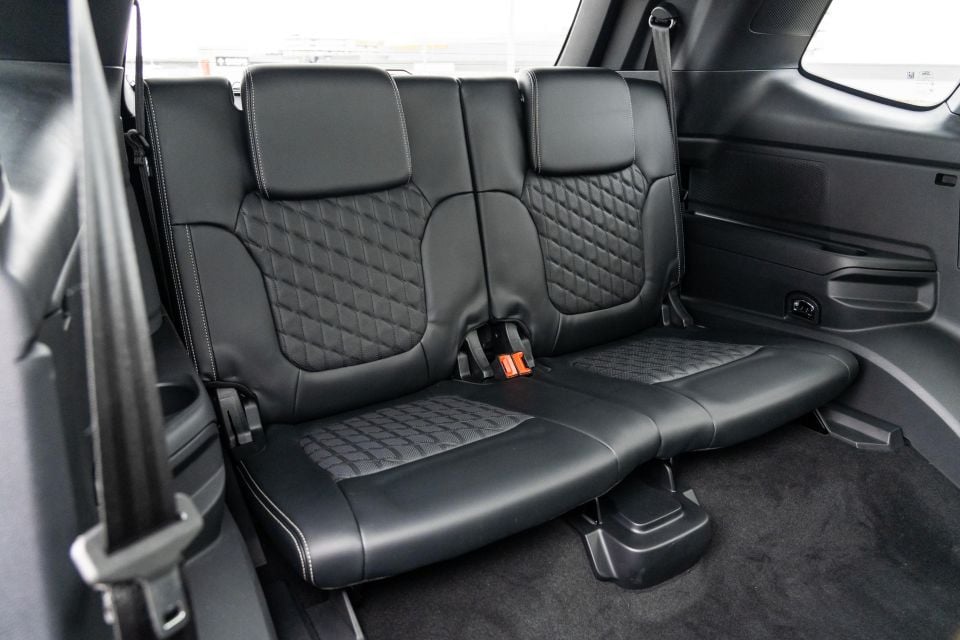
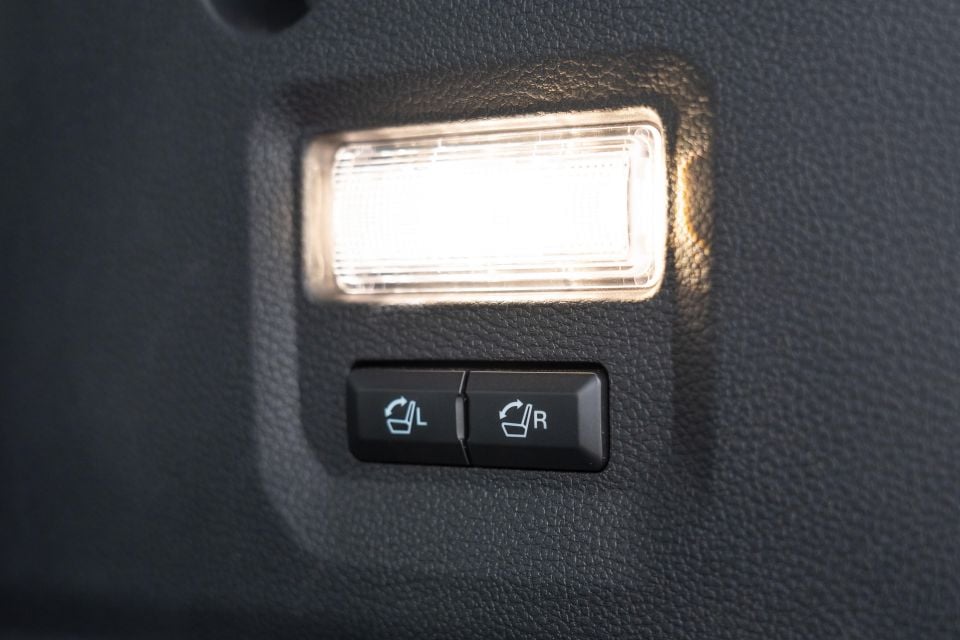
The elevated theatre-style rear seating means little ones will have a good view out in the second row – no more emergency stops for car sickness.
Leg-, head- and knee room are all plentiful even if you’re over six-foot like myself, and you can squeeze three across for shorter journeys. I will note the decent driveline hump in the floor eats into foot room, however.
While there isn’t a third zone of climate control, there is a manual fan control to toggle the air speed through the roof-mounted air vents in the second and third rows, which is handy. Behind the centre console is also a module with USB-A and USB-C charge ports to keep phones and iPads juiced.
Other rear seat amenities include map pockets behind the front seatbacks, a fold-down centre armrest with cupholders, bottle holders in the doors, as well as the requisite ISOFIX window seat anchors and top-tether points across all three second-row seats.
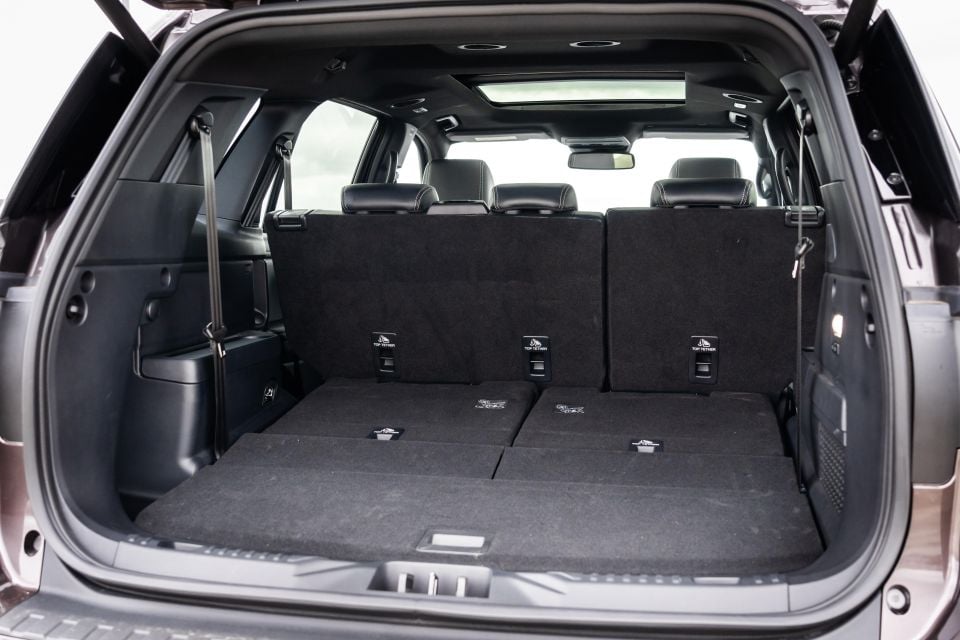
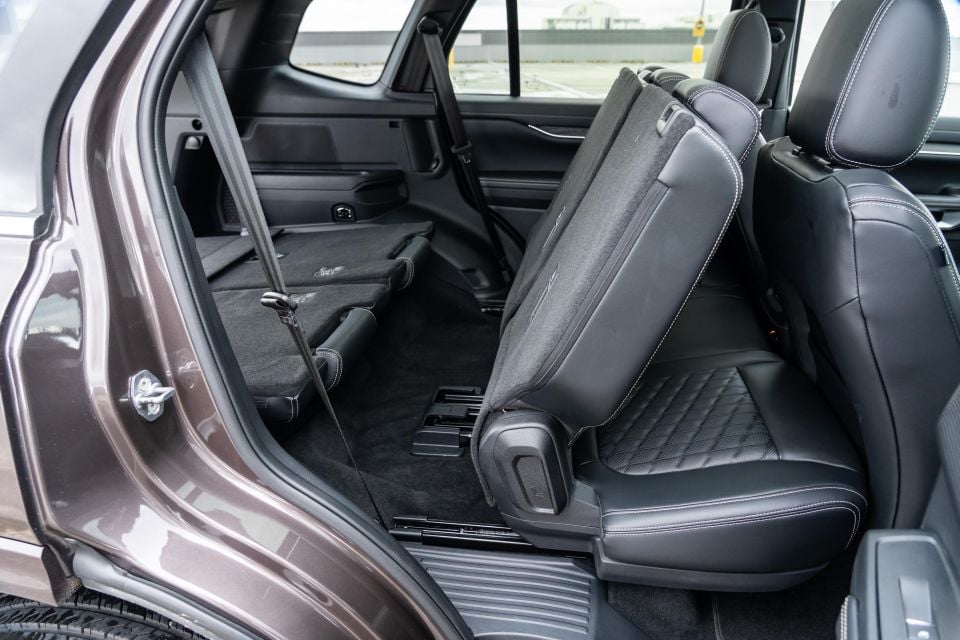

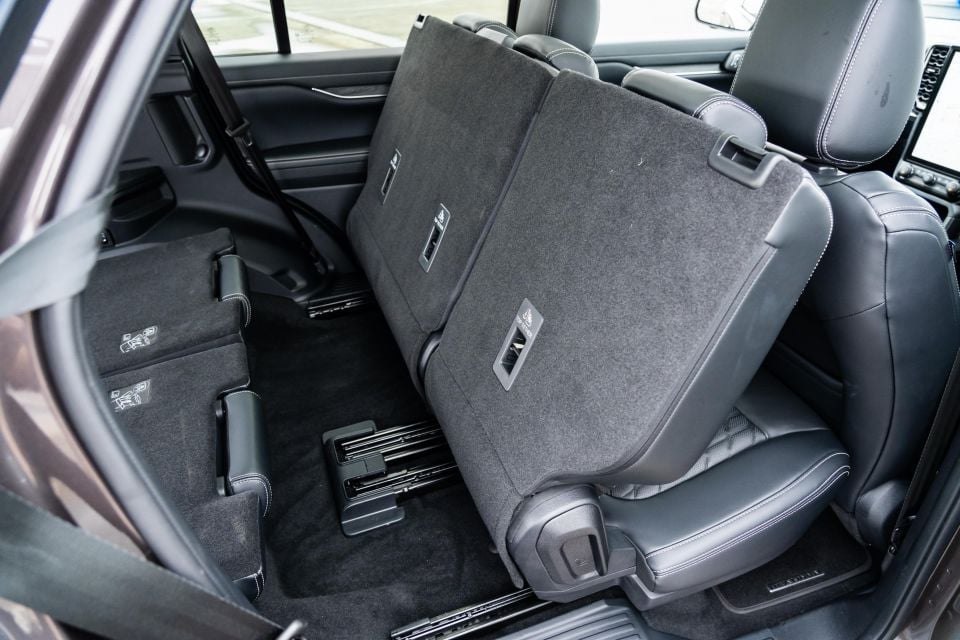
Access to the third row is via folding and sliding the second row forward, but it’s not quite as easy to get in as it is in something like a Kia Sorento or the now defunct Mazda CX-9.
Once you’re back there it’s more than kid friendly, and you can probably pinch some adults in there for a shorter journey.
Air vents feature back there, along with 12V ports, and the curtain airbags cover all three rows of seating. Big windows are also a plus.
Behind the third row, there’s 259L of cargo space, expanding to 898L with it folded and 1818L with the second row folded. With all three rows up, you can fit either some small bags or perhaps one suitcase, pending size.
| Dimensions | Ford Everest Platinum 4WD |
|---|---|
| Length | 4914mm – without tow receiver |
| Width | 1923mm – excluding mirrors |
| Height | 1837mm – to top of antenna base |
| Wheelbase | 2900mm |
| Kerb weight | 2512kg |
| Cargo capacity | 259 litres – 7-seat mode 898 litres – 5-seat mode 1818 litres – 2-seat mode |
To see how the Everest compares with its rivals, check out our comparison tool.
The Everest Platinum is exclusively available with Ford’s V6 turbo-diesel and four-wheel drive with 4A mode.
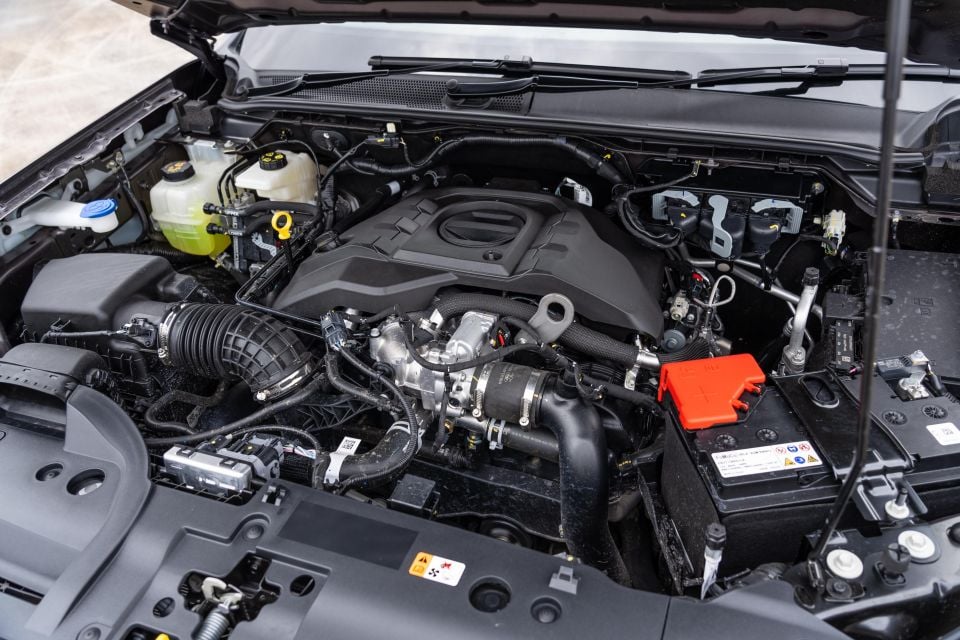
| Technical Specifications | Ford Everest Platinum 4WD |
|---|---|
| Engine | 3.0L turbo-diesel V6 |
| Power | 184kW @ 3250rpm |
| Torque | 600Nm @ 1750-2250rpm |
| Transmission | 10-speed auto |
| Drive type | 4WD with 4A mode |
| Fuel economy – claimed | 8.5L/100km |
| Fuel economy – as tested | 10.0L/100km |
| CO2 emissions – claimed | 224g/km |
| Fuel tank | 80 litres |
| Kerb weight | 2512kg |
| Payload | 638kg |
| Braked towing capacity | 3500kg |
| Gross vehicle mass – GVM | 3150kg |
| Gross combination mass – GCM | 6250kg |
It’s worth noting the entire Everest engine lineup features AdBlue injection in line with Euro 6 emissions standards, which helps to reduce harmful particulates emitted by diesel vehicles such as nitrogen oxides (NOx).
Most rivals only fit a diesel particulate filter (DPF) in line with Euro 5 regulations, the minimum requirement in Australia currently.
To see how the Everest compares with its rivals, check out our comparison tool.
Ute-based SUVs have historically been amongst my least favourite cars to drive due to their workhorse-like nature, but this latest Everest has really flipped that perception on its head.
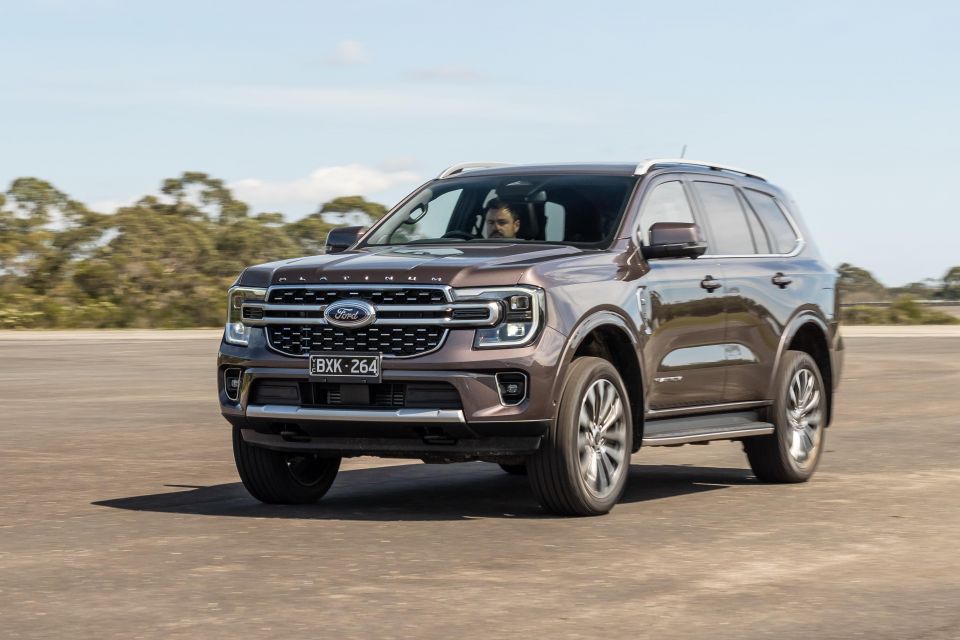
The Ranger is already an excellently well-rounded utility, but the Everest’s rear coil suspension and family leaning vibe takes that a step further. In Platinum trim, it drives like a properly luxurious vehicle.
Performance from the V6 diesel is a little lazy but also effortless, with all 600Nm available from just 1750rpm, and the 10-speed automatic has what seems like infinite ratios to choose from so that progress is smooth.
You barely notice it row through the cogs, and if you’re not in a hurry it quickly settles in eighth or ninth with revs barely sitting above idle at a cruise.
If you plant your foot it’ll take one, two moments to kick down and get going, but it hustles along alright for a tall, boxy truck weighing 2.5 tonnes. During our 4WD SUV Mega Test, the Everest Platinum V6 managed a 9.39-second 0-100km/h time, which is over a second quicker than the four-cylinder bi-turbo version.
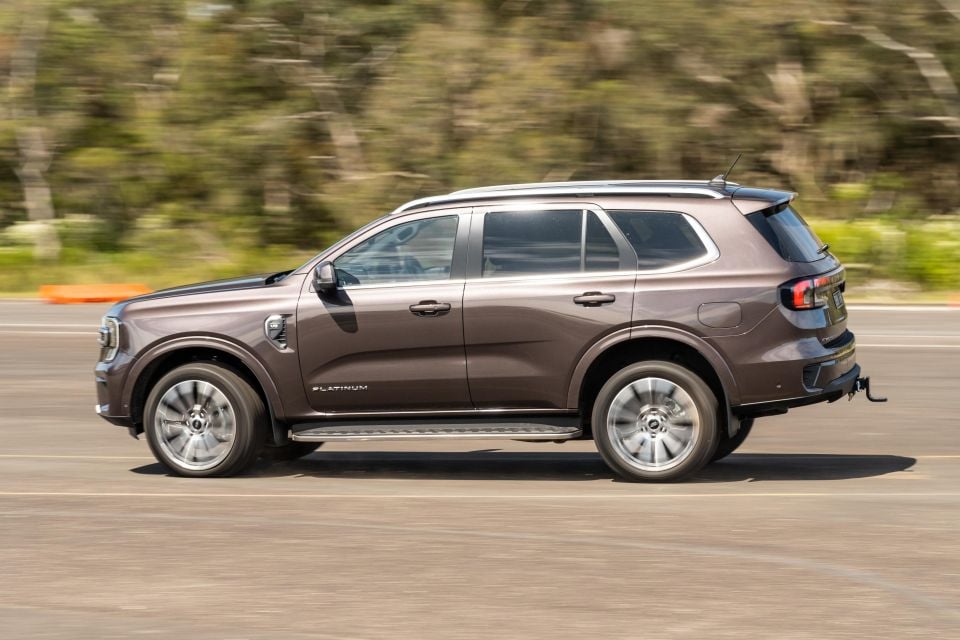
That doesn’t necessarily tell all the story either, because while big diesel SUVs and utes have sluggish 0-100 times by passenger car standards, it’s the rolling acceleration that really impresses – especially relative to four-cylinder rivals.
Having 600Nm on tap means the Everest will perform highway overtakes pretty easily, and according to our testing it’ll do 80-120km/h on the trot 1.3s quicker than an Everest bi-turbo and 2.0s quicker than an Isuzu MU-X 3.0.
And, while it’s doing it the six-cylinder oiler has a much more attractive and muscular engine note than rattly four-cylinder equivalents. If you’re planning to tow often, this powertrain would form as the more attractive option.
What I love most about the Everest V6’s character is cruising on the highway, where at 100-110 clicks it’s quiet, settled and secure. For family road trips, there are few 4WDs with this level of refinement.
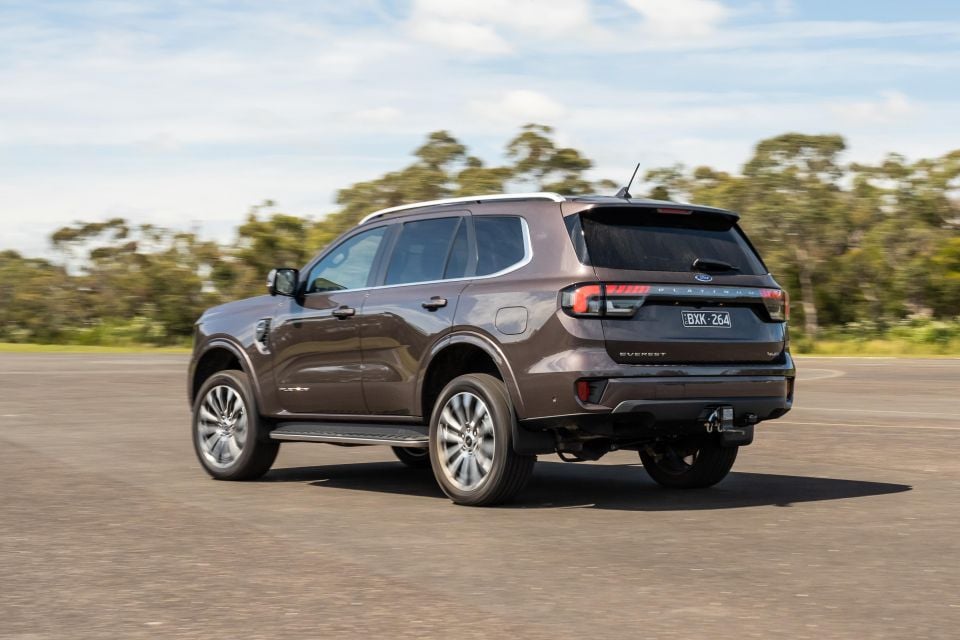
It’s pretty darn quiet, with minimal road and wind noise permeating the cabin save for a hint of tyre noise on rougher blacktop and some faint wind whistle over the chunky side mirrors at high speeds on windy days.
The tall body and rugged underpinnings mean you shouldn’t be expecting sporty dynamics, but the light and accurate steering makes this easy to place in tight city manoeuvres as well as winding country roads, and the body is well controlled against lateral forces.
Outward visibility is pretty good thanks to the tall glasshouse and big mirrors, and the surround camera system offers a good view of the vehicle’s surrounds to help keep the Everest between tight carpark markings. That said, at 4.9m long and 1.9m wide with bluff, upright edges; this is still a big ol’ bus.
Ride quality is pretty good even on the Platinum’s 21-inch alloys. You can also option smaller 18-inch rims in all-terrain rubber if you need the more rugged shoes for off-road expeditions. Personally, I think 19s or 20s would have been more than enough.

At times the ute underpinnings come through on sharper hits, with a bit of a terse edge to the initial impact. It’s far from uncomfortable though, and the Everest is a good head and half a shoulder ahead of most rivals in this regard.
The Everest’s suite of assistance systems are very well calibrated and are another area where it beats out its competitors, with intuitive adaptive cruise and lane centring systems to facilitate semi-autonomous driving.
In Platinum trim the Everest is fully loaded, meaning blind-spot monitoring and rear cross-traffic alert for helping navigate gaps in traffic or reversing out of blind parking spots, and there’s a surround parking camera as noted earlier.
The Platinum also scores the available Matrix LED headlights with auto levelling as standard, with an adaptive highbeam function that not only does a good job of illuminating the road ahead in poorly lit areas, but also intelligently blanks out light segments to avoid dazzling oncoming road users.
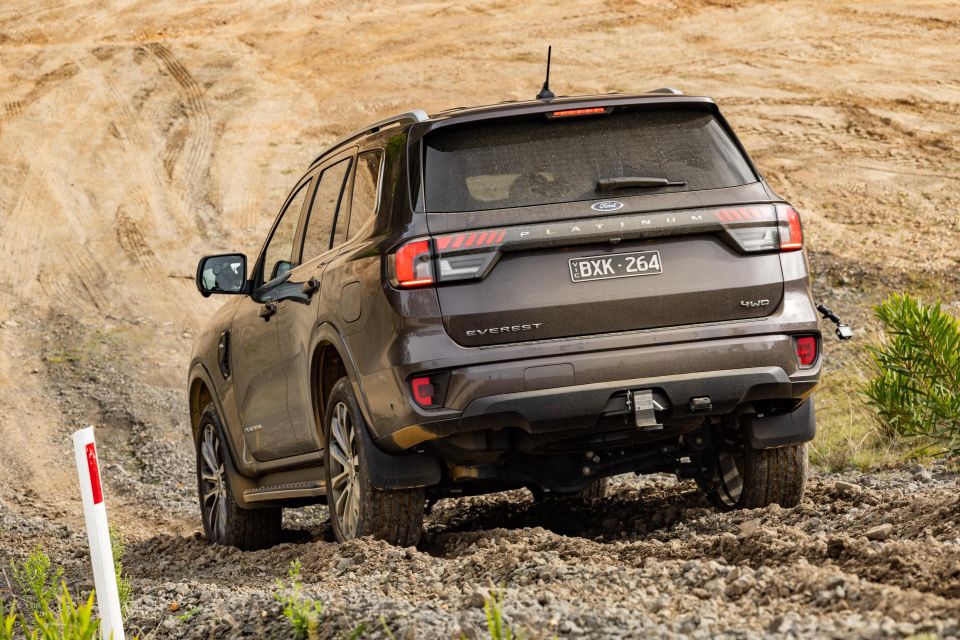
CarExpert helps new car buyers save thousands with expert reviews, honest advice, and transparent pricing – no dealer pressure and no sales games.
As for off-road performance, this exact Everest took part in our 4WD Mega Test in 2023, and performed quite well even with its road-focused wheel and tyre package.
Founder Paul Maric said: “[It] walked through the offset moguls in 4A mode, smartly shuffling torque to the grounded wheels to drag the car out. It was the same situation in 4H with the rear differential unlocked, and the car set to Mud/Ruts mode”.
“The Everest did touch down slightly, indicating it had less ground clearance than some of its rivals. Despite a bit of wheelspin brought about by its road-oriented tyres, the Everest V6 did an impressive job shuffling torque around to climb Mogul Mountain with a constant throttle.
“Ford’s hill-descent control is the best in the business, allowing the driver to adjust speed using the cruise control buttons. The lack of ugly noises from the brakes is also impressive.
“Gravel Mountain challenged the Everest; it failed to scale it on the third attempt despite a healthy serving of the throttle – potentially due to its highway-terrain tyres.”

| Technical Specifications | Ford Everest Platinum 4WD |
|---|---|
| Track front and rear | 1620mm |
| Ground clearance | 226mm – unladen |
| Approach angle | 30.2 degrees |
| Departure angle | 25.0 degrees |
| Ramp breakover angle | 21.9 degrees |
| Wading depth | 800mm |
To see how the Everest compares with its rivals, check out our comparison tool.


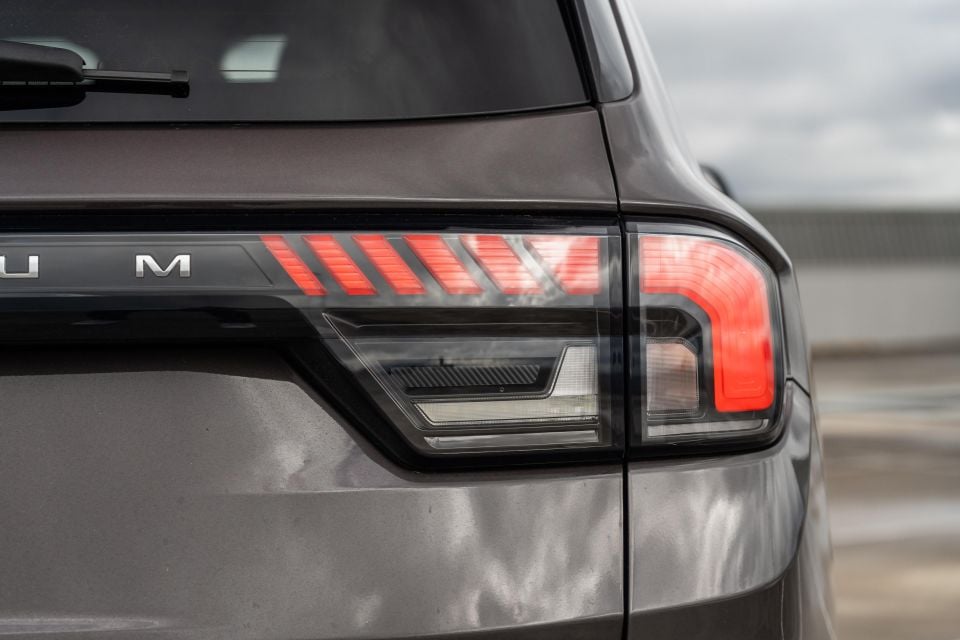

Everest Ambiente highlights:
Everest Trend adds:
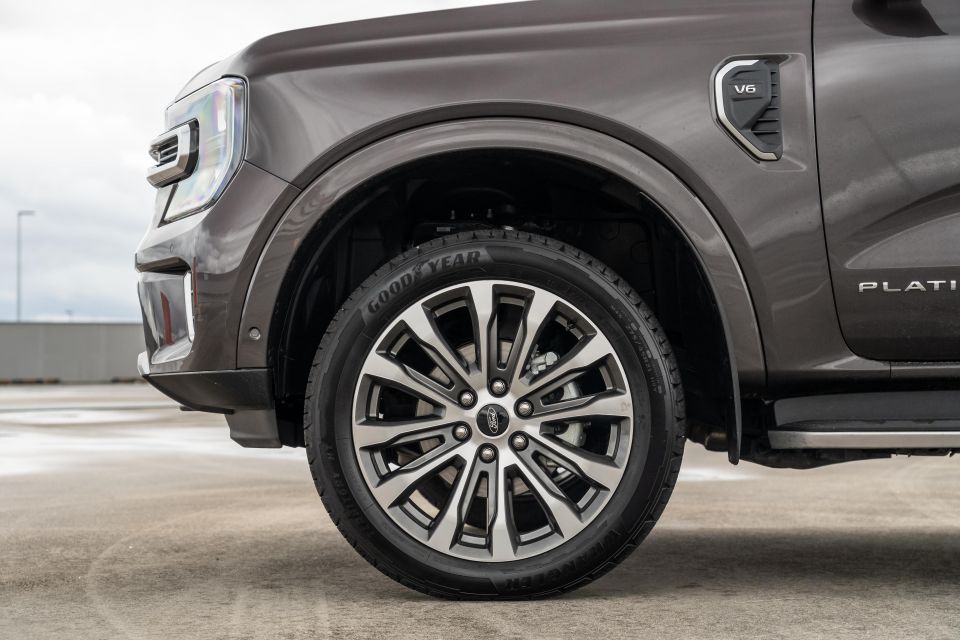

Everest Sport adds:
Everest Platinum adds:
The Everest Platinum is available with the following options for MY24.5.
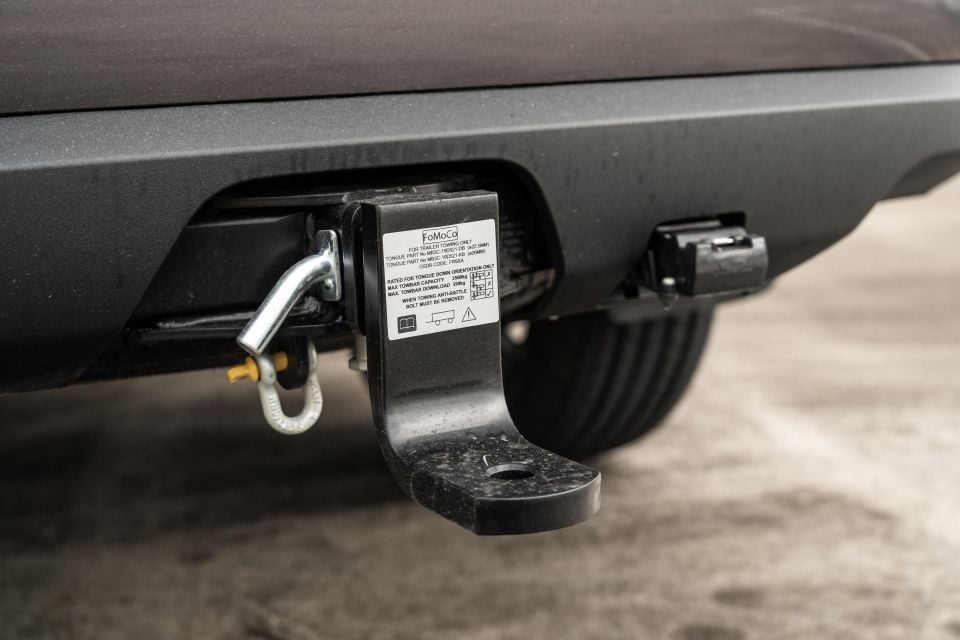
18-inch Alloy Wheel Pack: $NCO
Towing Pack: $1900
Pro Towing Pack: $2900
*Pro Trailer Backup Assist allows the driver to ‘steer’ the trailer via the outer ring of the drive mode controller while the vehicle moves the steering wheel.
Prestige paint: $700
The Ford Everest has a five-star ANCAP safety rating based on testing of the closely related Ford Ranger ute.
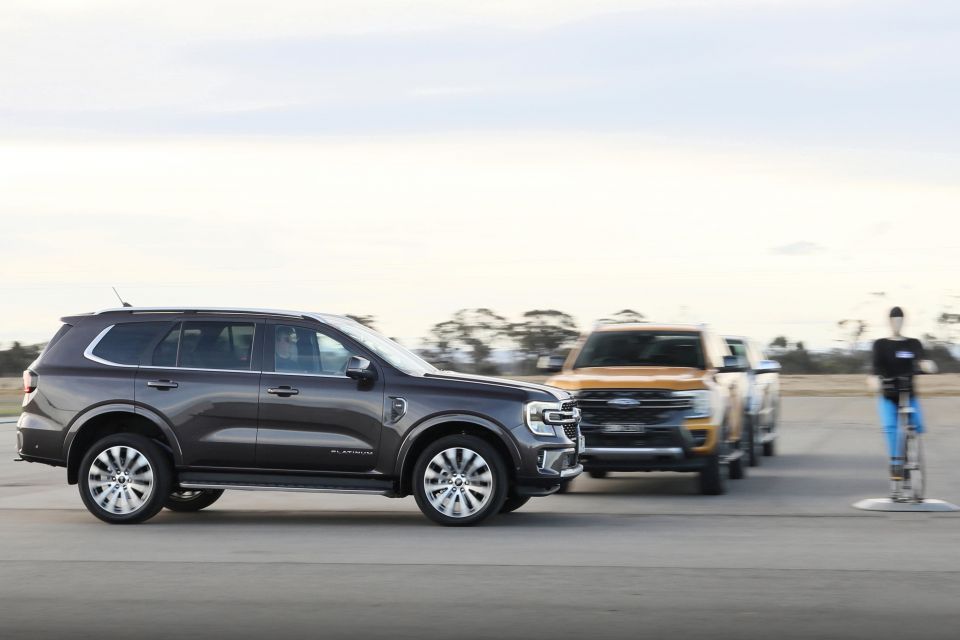
It scored 86 per cent for adult occupant protection, 93 per cent for child occupant protection, 74 per cent for vulnerable road user protection, and 86 per cent for safety assist.
The five-star rating applies to the whole Everest range.
Standard safety equipment includes:
The Everest is backed by a five-year, unlimited-kilometre warranty like the wider Ford range.
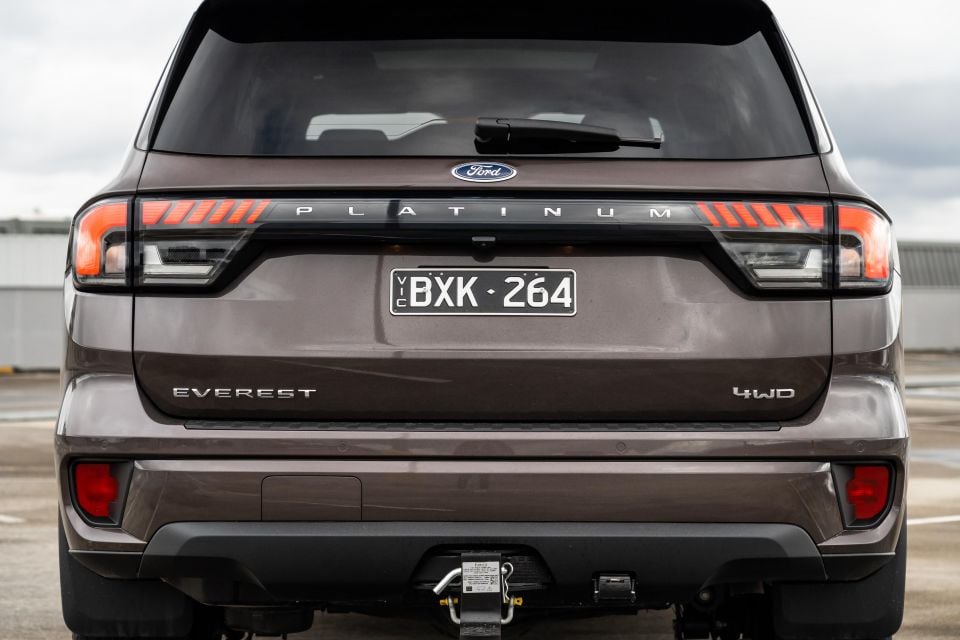
Maintenance is required every 12 months or 15,000 kilometres, and the first five services are each priced at $379 under the Blue Oval’s capped-price service program – $50 higher per service than in pre-MY24 vehicles.
| Ownership Program | Ford Everest Platinum 4WD |
|---|---|
| Warranty | 5 years, unlimited kilometres |
| Roadside assistance | Up to 7 years – service activated |
| Service interval | 12 months or 15,000 kilometres |
| Service pricing | $379 per service, first 5 visits |
To see how the Everest compares with its rivals, check out our comparison tool.
The Everest remains a benchmark for large 4WD SUVs, and the fully-loaded Platinum – while pricey – is a showcase of everything the nameplate has to offer in its current iteration.
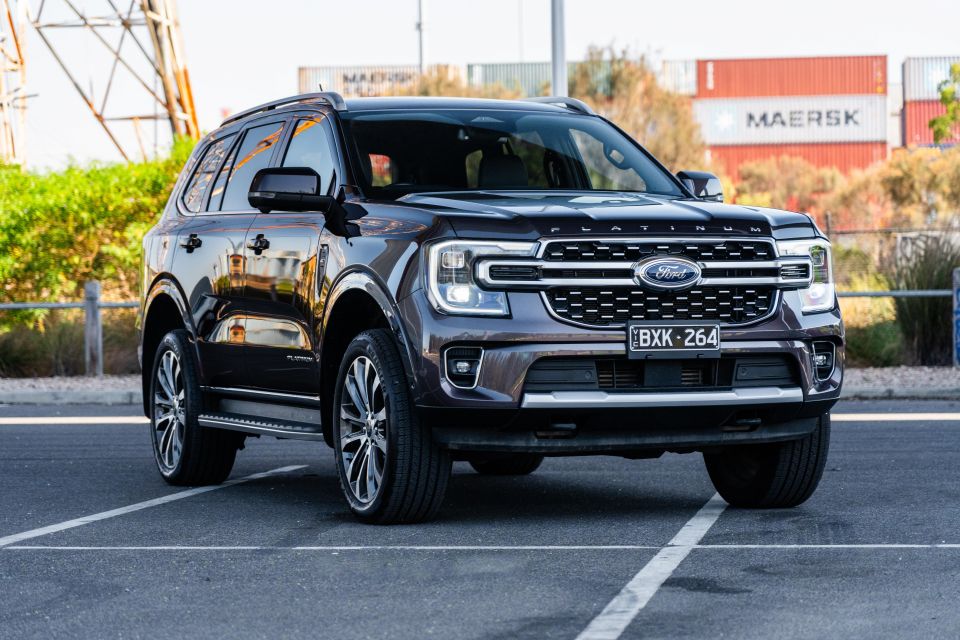
It’s loaded with everything Ford can throw at it, including the trick Matrix LED headlights and fully digital instrument cluster, while the more luxurious trimmings inside make this less of a workhorse-come-family-bus and a bit more premium tourer.
Ford’s V6 turbo-diesel is a peach, and is a great all-rounder in terms of everyday commuting performance as well as heavy-duty hauling. Even in manicured Platinum trim, the Everest V6 feels purpose built for Australian families.
But the flagship’s new asking price of $81,115 plus on-road costs is getting precariously close to more premium metal. The Volkswagen Touareg 170TDI is only $5000 more and is arguably a lot more premium and refined thanks to its shared underpinnings with the likes of the Audi Q7 and Bentley Bentayga, and is also rated to tow 3.5 tonnes.
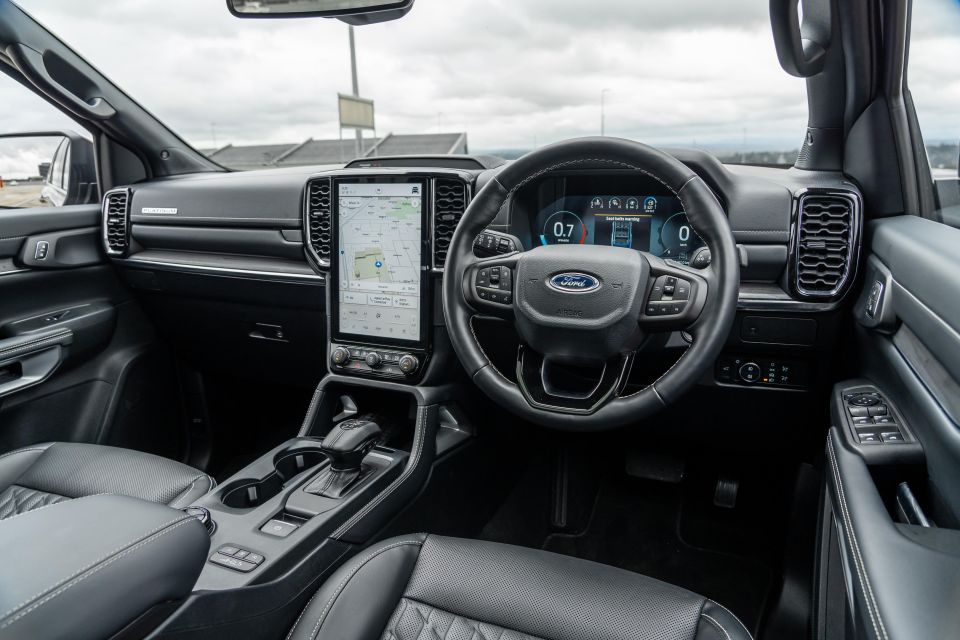
The next-gen Toyota LandCruiser Prado is around the corner, and $80,000 will only buy you a one-up-from-base GXL but it should be more tech laden and better to drive than the old one. We’re very keen to get our hands on one.
If you don’t plan to tow or go off-road, the Mazda CX-90 D50e GT has more space for people and is more luxuriously trimmed with a similarly punchy six-cylinder diesel, and that’s before you go into other road-biased rivals like high-grade versions of the Hyundai Palisade and Kia Sorento.
But that’s not why you buy an Everest, is it? Ford’s trusty family 4WD is the Ranger for mums and dads that want to bring the kids and their friends along for the ride, with equivalent capability and more refinement than the brand’s top-selling ute – and the Platinum is perfect for those that want all that but with a dash of fancy.
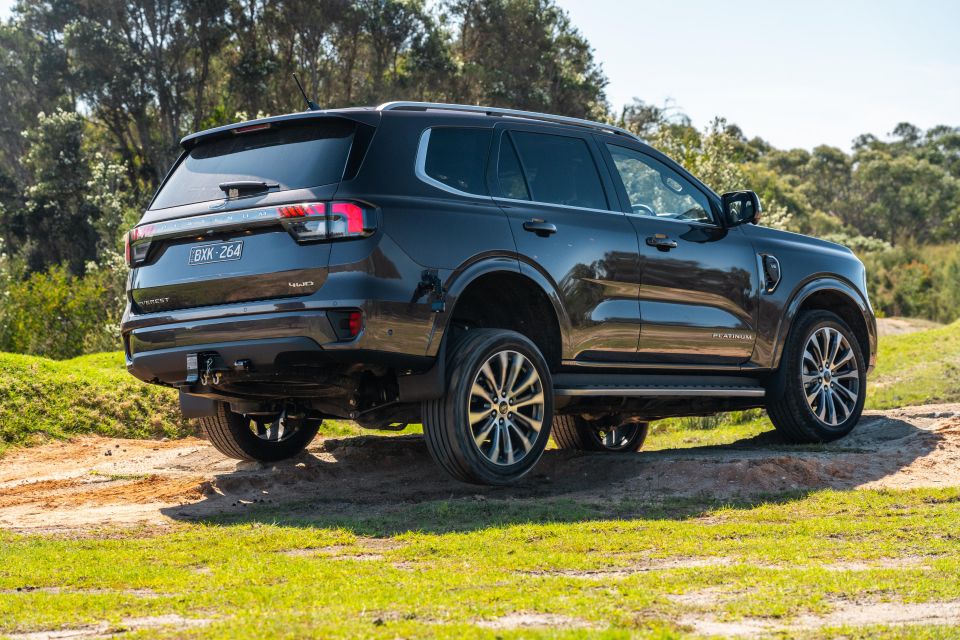
Click the images for the full gallery
MORE: Buy a Ford Everest MORE: Everything Ford Everest
CarExpert helps new car buyers save thousands with expert reviews, honest advice, and transparent pricing – no dealer pressure and no sales games.
James is an automotive journalist based in Melbourne, Australia. Before joining CarExpert.com.au in 2020, James has worked at leading auto media outlets including Carsales and CarAdvice, as well as at Pulse agency for Ford Australia's communications team. In 2019 James made Mumbrella's 'Top 20 most prolific web authors in Australia' list after publishing 1,360 articles between March 1, 2018 and February 28, 2019 for CarAdvice. James is also an Ambassador for Drive Against Depression – an Australian charity whose mission is to support mental wellness through the freedom of driving and a shared love of cars.


Gautam Sharma
2 Months Ago
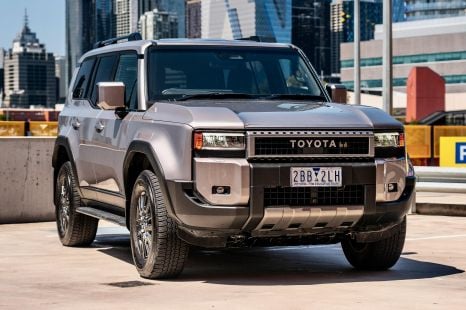

Max Davies
1 Month Ago


Matt Campbell
26 Days Ago
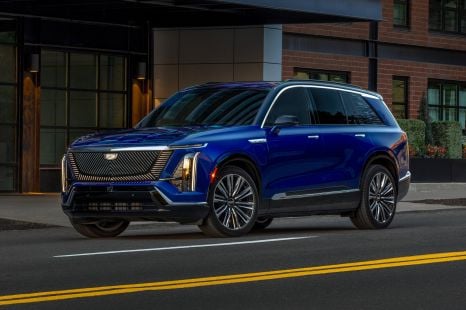

William Stopford
21 Days Ago
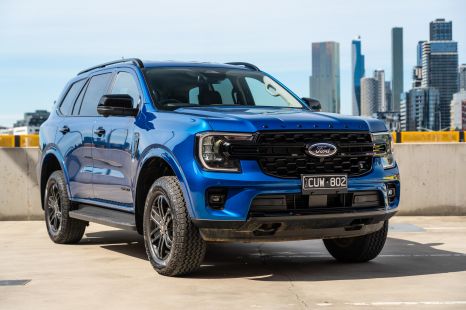

Josh Nevett
21 Days Ago
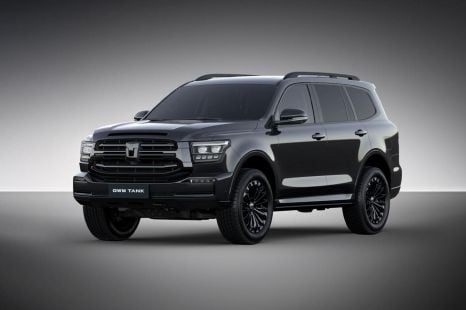

William Stopford
14 Days Ago